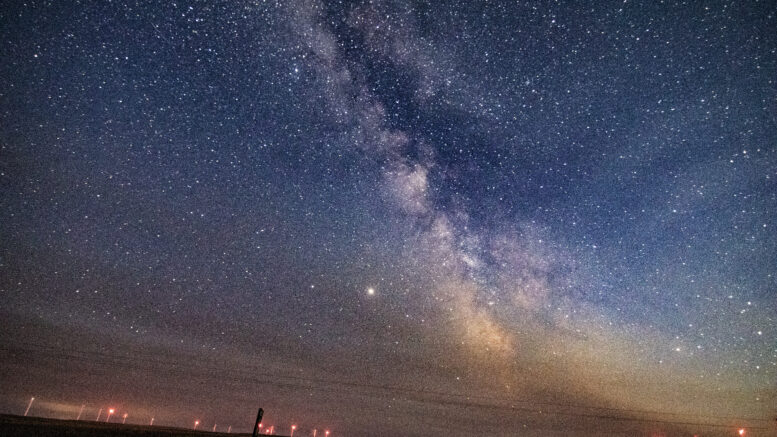In prior articles, we have taken a look at the great work that the Oregon Dark Sky chapter has undertaken to measure and track light pollution in the various locations of Oregon. This has yielded some great opportunities for the public to get involved in helping preserve the night sky and also where to go observing.
In addition to this and other work, the Oregon Dark Sky chapter has written a great report in March on 2023, titled “Oregon Parks and Recreation Camping & Dark Skies” with the intent of “identify[ing] those Oregon Parks and Recreation Department properties that could qualify as International Dark Sky Parks.” Of course with new data collection and modeling, the chapter has been able to update, track, and better understand existing locations, but also identify new locations that qualify. A prior study found that there are 33 OPRD properties with suitably dark skies that also allow camping. However, using the new models and collected data, identifies the same 33 parks, and expands to 16 additional dark sky properties that allow camping, for a total of 49 Oregon State Parks. The table below shows this information from the report.

Lets put this into perspective before moving forward. There are 361 state parks in Oregon as of this writing, which would mean that 13.573407202% of all Oregon State Parks would qualify as Dark Sky Parks. To put this into context, there are 19 states with a fewer number of total state parks than Oregon does of qualifying Dark Sky Parks. These states are Rhode Island, Delaware, Virginia, West Virginia, Indiana, South Carolina, Alabama, Mississippi, Louisiana, North Dakota, Kansas, Oklahoma, New Mexico, Colorado, Wyoming, Idaho, Utah, Arizona, and Nevada.
The busiest campgrounds that made the list that are also dark sky candidates are Nehalem Bay State Park, Jessie M. Honeyman Memorial State Park, and Cape Lookout State Park, which are #3, 4, and 5 on the list.
On the other end are the Oregon State Parks that are the least visited, but also are great dark sky candidates. These include the 18th least visited, Cottonwood Canyon State Park, the 11th least visited of Goose Lake State Recreation Area, Jackson F. Kimball State Recreation Site is the 8th least visited, Unity Lake State Recreation Site is the 7th least visited, Bates State Park is the 5th least visited, and Catherine Creek State Park is the 3rd least visited for 2023.
What we can see is that there are a plethora of parks that qualify, and not all of these parks are random parks tucked away in Oregon far away from population centers that people don’t use nor are not aware of. For example, Stub Stewart State Park is only about 35 miles (40 minutes) from Portland, and provides Star Parties and great nightly views, which is a much shorter drive than a Cape Lookout.
Stub Stewart does astronomy events, and so does Cottonwood Canyon. However, there is room for growth to include more astronomy programs and performing astronomy if the need is there. And the study does show that there are under the radar parks for aspiring astronomers to visit that have great skies and various attendance.
Make sure to follow us on Twitter and Instagram, and make sure to view our other material like this, such as unique astronomy sites for unique places to view astronomy in the Pacific Northwest and cool articles like this. Make sure to check out our website for other articles like this and let us know what else you would like to see.

I’m grateful for your insights.